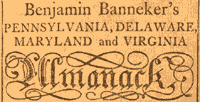6e. Free African Americans in the Colonial Era

When Crispus Attucks earned his unfortunate claim to fame as a victim in the Boston Massacre, he was not a slave. He was one of the relatively few African Americans to achieve freedom in colonial America. Although freedom is clearly desirable in comparison to a life in chains, free African Americans were unfortunately rarely treated with the same respect of their white counterparts.
There were several ways African Americans could achieve their freedom. Indentured servants could fulfill the terms of their contracts like those brought to Jamestown in 1619. In the early days, when property ownership was permitted, skilled slaves could earn enough money to purchase their freedom. Crispus Attucks and many others achieved liberty the hard way — through a daring escape. It only stands to reason that when faced with a perpetual sentence of bondage many slaves would take the opportunity to free themselves, despite the great risks involved.
Another way of becoming free was called manumission — the voluntary freeing of a slave by the master. Masters did occasionally free their own slaves. Perhaps it was a reward for good deeds or hard work. At times it was the work of a guilty conscience as masters sometimes freed their slaves in their wills. Children spawned by slaves and masters were more likely to receive this treatment. These acts of kindness were not completely unseen in colonial America, but they were rare. In the spirit of the Revolution, manumission did increase, but its application was not epidemic.
Free African Americans were likely to live in urban centers. The chance for developing ties to others that were free plus greater economic opportunities made town living sensible. Unfortunately, this "freedom" was rather limited. Free African Americans were rarely accepted into white society. Some states applied their slave codes to free African Americans as well. Perhaps the most horrifying prospect was kidnapping. Slave catchers would sometimes abduct free African Americans and force them back into slavery. In a society that does not permit black testimony against whites, there was very little that could be done to stop this wretched practice.






